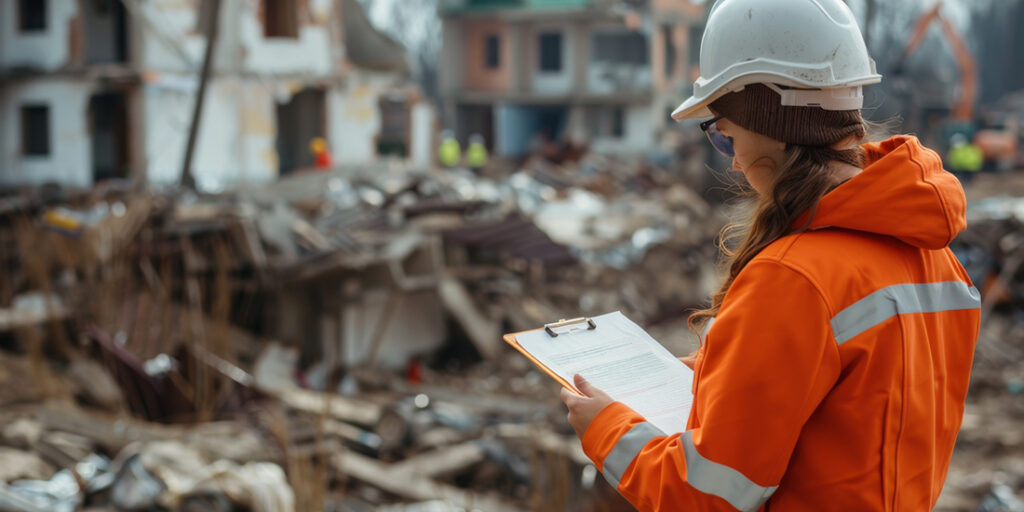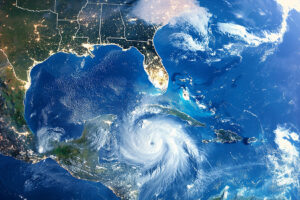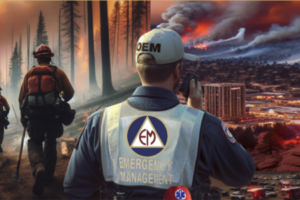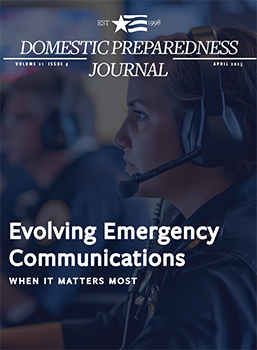Today's Top Picks

Growing Foreign Threats to National Security, Part 1: Challenges and Considerations
Part 1 of a two-part series explores the nation-state threat and its implications for the emergency management community, regarding the operations, resilience, resourcing, strategies, and policies necessary to better prepare for future events.

The Ethics of Data in Disaster Management and Crisis Operations
As the demand for evidence-based decision-making continues to grow, emergency management professionals must commit to ethical data practices that respect the needs of the community and the rights of individuals. In times of crisis, data can save lives, but only if managed with care, responsibility, and respect for ethical principles.

Advisory Board Spotlight: Interview with Ray Barishansky, DrPH
Ray Barishansky, DrPH, is on the advisory board for the Domestic Preparedness Journal and has a passion for public health and emergency management. He sat down with the Journal’s Nicolette Casey to share his story. Learn about Dr. Barishansky’s journey from an EMT to a Doctor of Public Health.

Cyber and Physical Resilience in the Food and Agriculture Industry
Despite low profit margins and major setbacks caused by natural hazards and disasters, the food and agriculture sector continues to find innovative solutions. Balancing and integrating new concepts and technological advancements with an old-school farming mentality will keep this sector resilient and thriving when battling cyber and environmental threats.
Trending
 Emergency Management has Evolved: Why the… by Chas Eby While initially useful, the term “all hazards” no longer accurately describes the functions or mission of the emergency management discipline.…
Emergency Management has Evolved: Why the… by Chas Eby While initially useful, the term “all hazards” no longer accurately describes the functions or mission of the emergency management discipline.… Imagining the U.S. Without Power: A Dual-World EMP Exercise by Charles (Chuck) L. Manto, K. Luke Reiner and Dave Hunt A dual-world tabletop exercise simulating an electromagnetic pulse event in Chicopee, Massachusetts, revealed startling discrepancies in outcomes between the city’s…
Imagining the U.S. Without Power: A Dual-World EMP Exercise by Charles (Chuck) L. Manto, K. Luke Reiner and Dave Hunt A dual-world tabletop exercise simulating an electromagnetic pulse event in Chicopee, Massachusetts, revealed startling discrepancies in outcomes between the city’s… Elevating Healthcare Emergency Preparedness… by Kathryn Romanchuk and Ben Kobliner Overlooked until disaster strikes, many emergency management departments struggle with personnel and budgetary constraints, yet the demand placed on these…
Elevating Healthcare Emergency Preparedness… by Kathryn Romanchuk and Ben Kobliner Overlooked until disaster strikes, many emergency management departments struggle with personnel and budgetary constraints, yet the demand placed on these… The Forefront of Innovation in Training &… by Arthur J. Simental Disaster wargaming may significantly change the future of tabletop exercises in emergency management and homeland security. Long used effectively to…
The Forefront of Innovation in Training &… by Arthur J. Simental Disaster wargaming may significantly change the future of tabletop exercises in emergency management and homeland security. Long used effectively to…Trending
 Elevating Healthcare Emergency Preparedness… by Kathryn Romanchuk and Ben Kobliner Overlooked until disaster strikes, many emergency management departments struggle with personnel and budgetary constraints, yet the demand placed on these…
Elevating Healthcare Emergency Preparedness… by Kathryn Romanchuk and Ben Kobliner Overlooked until disaster strikes, many emergency management departments struggle with personnel and budgetary constraints, yet the demand placed on these… The Forefront of Innovation in Training &… by Arthur J. Simental Disaster wargaming may significantly change the future of tabletop exercises in emergency management and homeland security. Long used effectively to…
The Forefront of Innovation in Training &… by Arthur J. Simental Disaster wargaming may significantly change the future of tabletop exercises in emergency management and homeland security. Long used effectively to… Emergency Management has Evolved: Why the… by Chas Eby While initially useful, the term “all hazards” no longer accurately describes the functions or mission of the emergency management discipline.…
Emergency Management has Evolved: Why the… by Chas Eby While initially useful, the term “all hazards” no longer accurately describes the functions or mission of the emergency management discipline.… Imagining the U.S. Without Power: A Dual-World EMP Exercise by Charles (Chuck) L. Manto, K. Luke Reiner and Dave Hunt A dual-world tabletop exercise simulating an electromagnetic pulse event in Chicopee, Massachusetts, revealed startling discrepancies in outcomes between the city’s…
Imagining the U.S. Without Power: A Dual-World EMP Exercise by Charles (Chuck) L. Manto, K. Luke Reiner and Dave Hunt A dual-world tabletop exercise simulating an electromagnetic pulse event in Chicopee, Massachusetts, revealed startling discrepancies in outcomes between the city’s…Trending
Emergency Management has Evolved: Why the… by Chas Eby While initially useful, the term “all hazards” no longer accurately describes the functions or mission of the emergency management discipline.…
Imagining the U.S. Without Power: A Dual-World EMP Exercise by Charles (Chuck) L. Manto, K. Luke Reiner and Dave Hunt A dual-world tabletop exercise simulating an electromagnetic pulse event in Chicopee, Massachusetts, revealed startling discrepancies in outcomes between the city’s…
Elevating Healthcare Emergency Preparedness… by Kathryn Romanchuk and Ben Kobliner Overlooked until disaster strikes, many emergency management departments struggle with personnel and budgetary constraints, yet the demand placed on these…
The Forefront of Innovation in Training &… by Arthur J. Simental Disaster wargaming may significantly change the future of tabletop exercises in emergency management and homeland security. Long used effectively to…
Domestic Preparedness Journal
Featured in this issue: Editor’s Note: Emergency Communications—Tough Lessons From the Maui Wildfires, by Catherine L. Feinman; Emergency Alerts: The Missing Link, by Rodrigo (Roddy) Moscoso; Hidden Barriers to Public Safety Interoperability, by Gabe Elias; AI Software in 911 Dispatch Centers: An Innovative Solution, by Tanya M. Scherr; A Systems Thinking Approach to Improving Emergency Communications, by William Chapman; Connectivity: The Foundation of Disaster Response and Preparedness, by Cory Davis; Know the Audience: Five Keys to Effective Communication, by Marc Hill; Bridging Communication Gaps: Lessons From Hurricane Helene, by Greg Hauser; A Regional Approach to Public Safety Communications Planning, by Charles (Charley) Bryson
Articles Out Loud

Article Out Loud – Disaster Stress Management in an Emergency Operations Center
May 7, 2025
Disasters affect responders and community members, but they also bring trauma to those working inside emergency operations centers. Distance from

Article Out Loud – A Holistic Strategy for Responders’ Well-Being
May 7, 2025
This is an article by Camilo Olivieri, an Article Out Loud from Domestic Preparedness, May 7, 2025. First responders and







Local-Level Planning for National-Level Threats